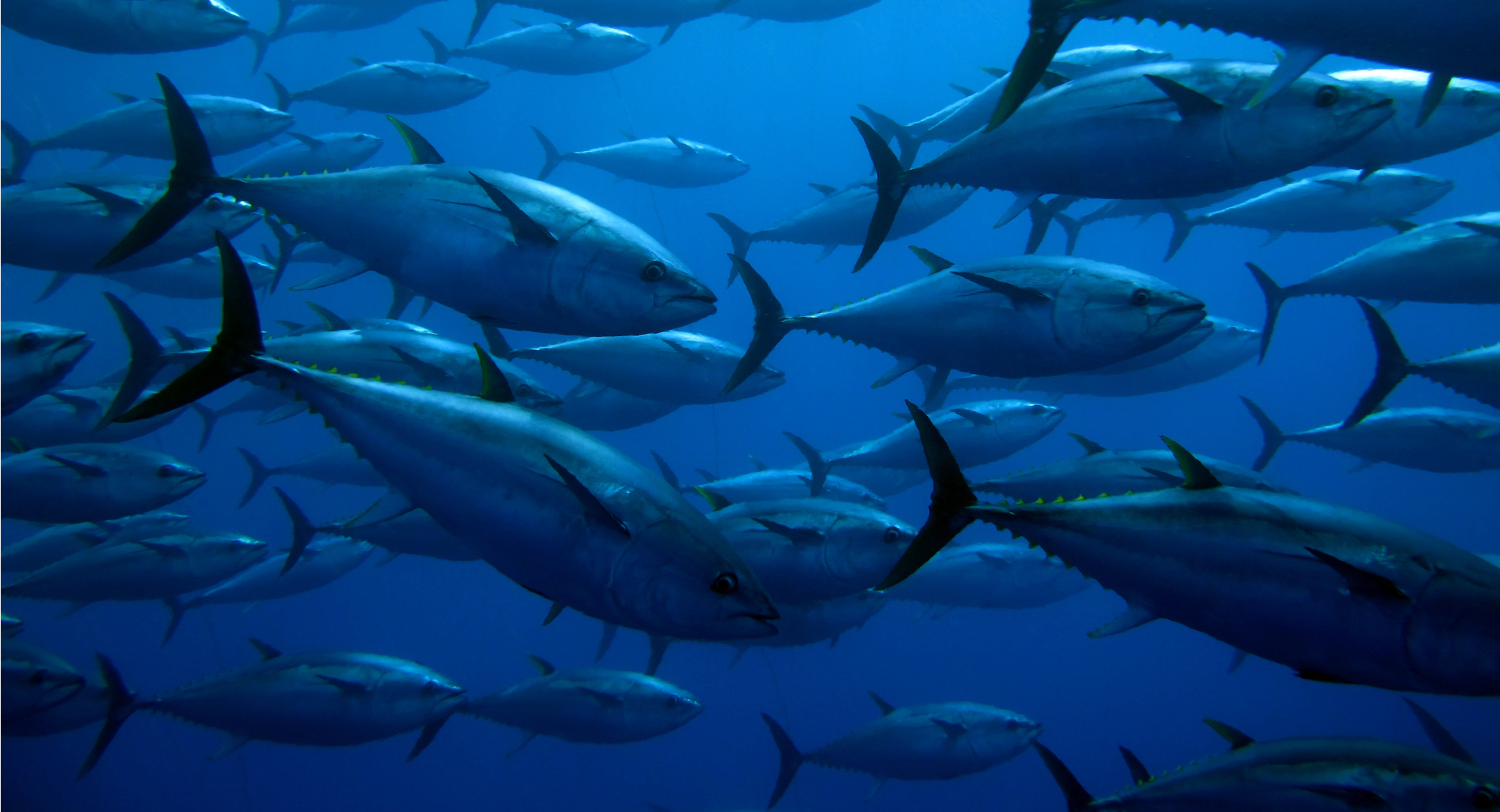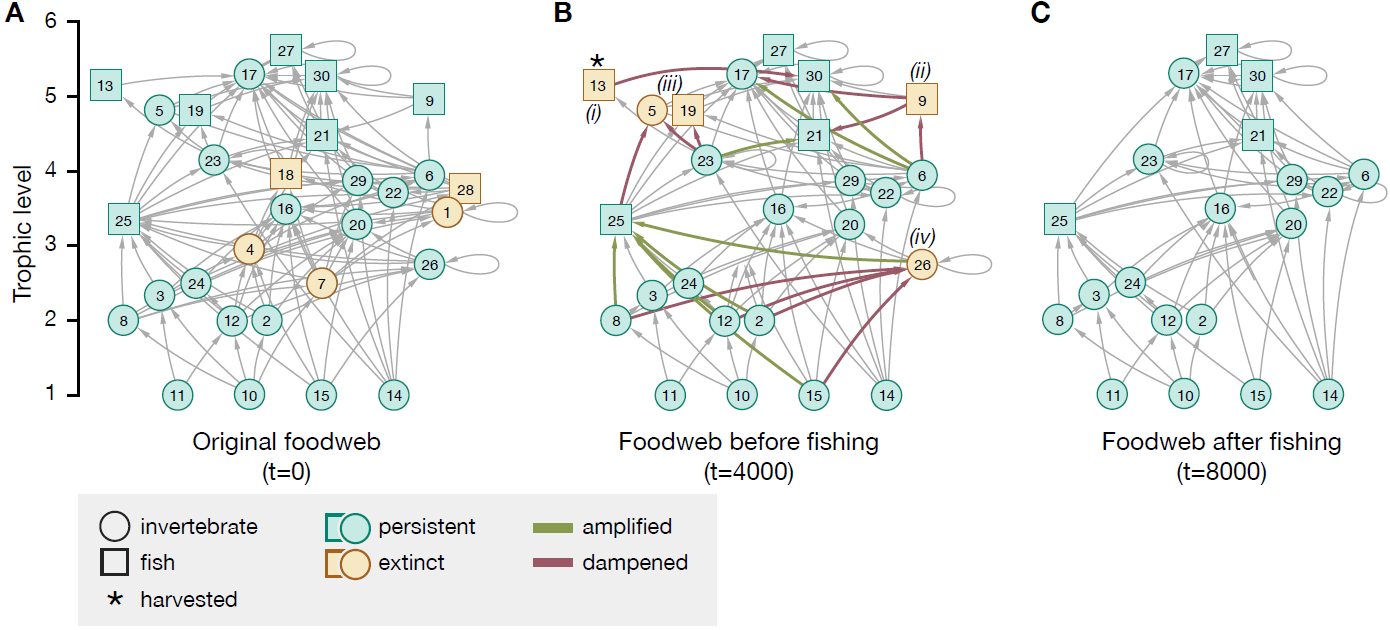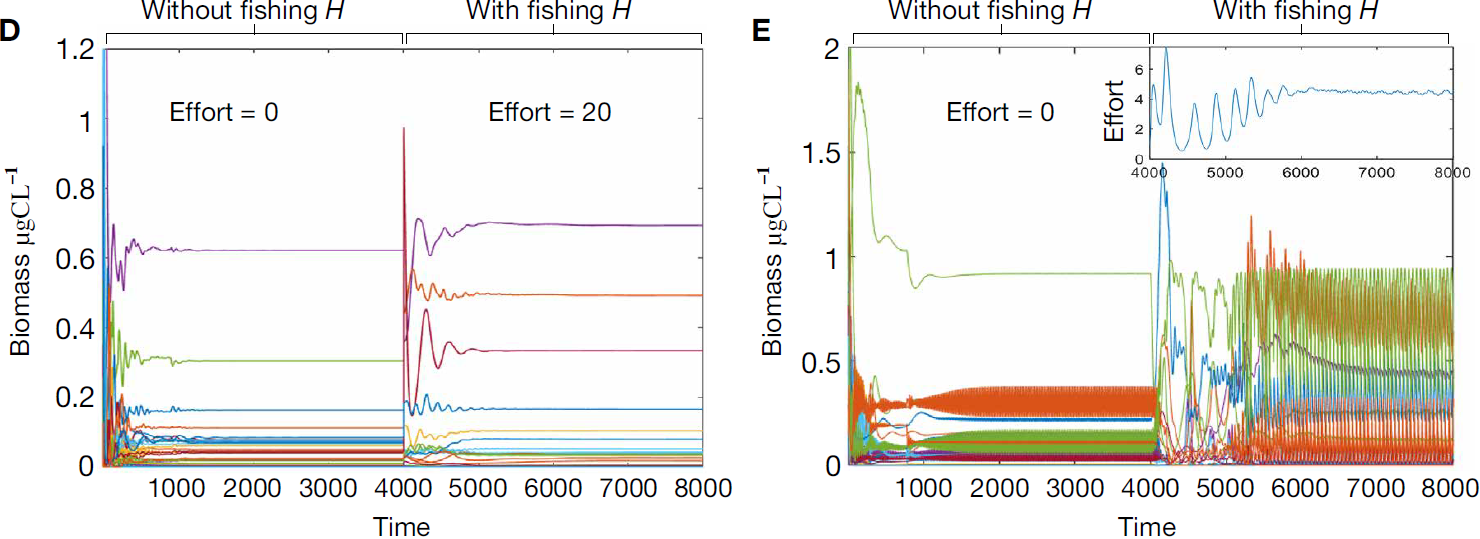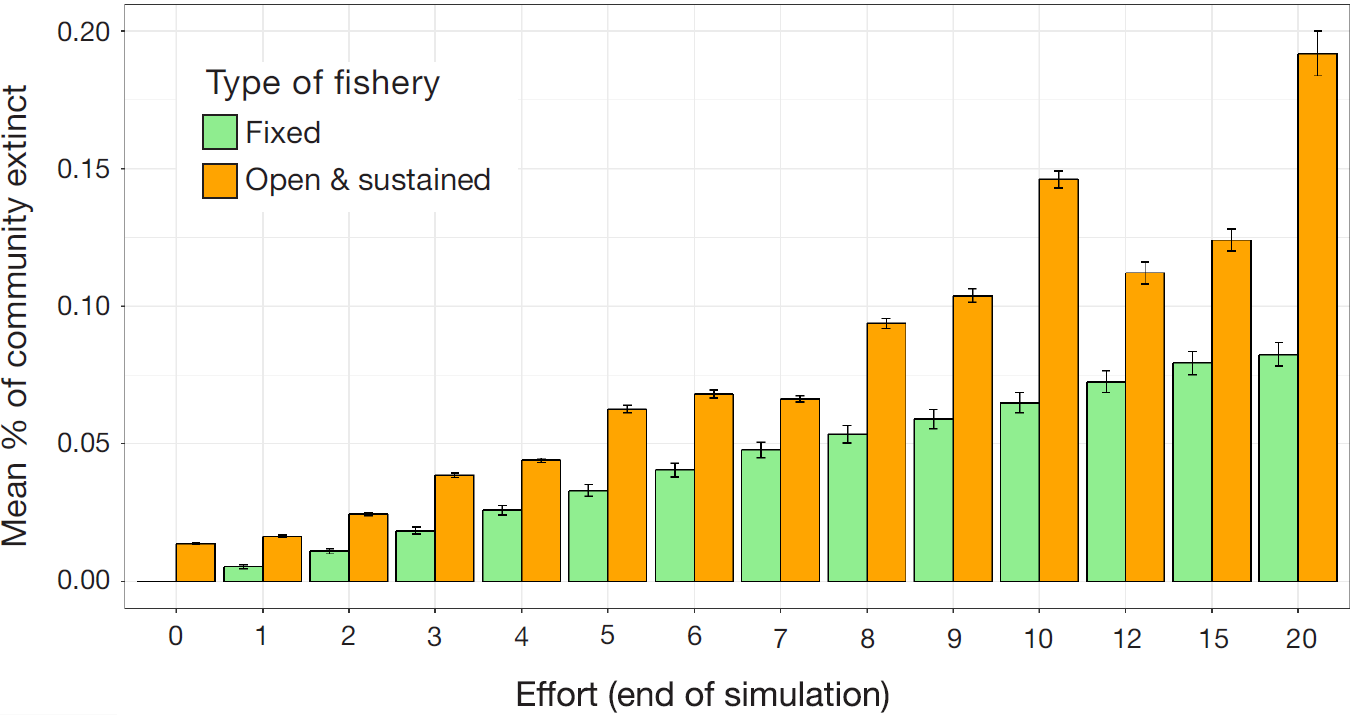Fisheries Economics

Aquatic ecosystems are complex systems that connect species and populations through various ecological interactions. Therefore a single change can reverberate out into the rest of the ecosystem. In the case of fisheries, researchers must take this into account to understand 1) the indirect effects of fishing/harvesting on the rest of food web and 2) how these changes can return to effect the harvested species further. This is where networks come in as a useful modeling tool to capture the complex interconnectivity of aquatic food webs (Fig 1). We can represent interacting species as nodes and ecological connections (e.g., trophic interaction/feeding relationships) as network edges. Furthermore, by parameterizing our model with a powerful tool called the Allometric Trophic Network, we can produce biological informed metabolic parameters that give us flexiblity in studying various unique aquatic fisheries and food webs.

Our network framework also allows us to expand our consideration to the economic side of fisheries. We do this by making the extractive harvesting of fisheries a dynamic
node in the network that dynamically responds to both available catch biomass and to fluctuating prices based on supply and demand in the market. Considering different
economic management conditions is particularly important as current management strategies have threatened the sustainability of numerous fisheries. We must understand
how different management strategies interact with food web ecology and support or impede sustainability.
In my recent work, my colleague and I created a series of aquatic food webs which we then subjected to fishing pressure under one of two different management scenarios.
Fishery management controls "Effort" which is a flexible variable potentially measuring number of active boats, work hours, lines, etc.
The two different mangement scenarios were:
1) Fixed Effort: A static fishing effort across time (Fig 2D). This serves as a control to the variable dynamics of open-access fisheries, but also has real-world representations
in various subsistence fisheries where strict permitting rules produce stable effort levels over the years
2) Open Access: Unregulated fishing effort. Effort adjusts in response to fishing profits, with effort growing or declining in response to positive
or negative net profits, respectively (Fig 2E). The dynamics of net profits are influenced by both yield and market price, with market price related to yield
through a linear pricing model (please see full paper linked at bottom of page for full details).

Results revealed non-linear dynamics driving the feedback between ecological dynamics in the food web and economic dynamics which are largely the product pricing and harvested biomass.
In comparing the two management strategies there were clear differences in ecological outcome. Namely, the Open Access fishing effort induced large perturbations in
the population trajectories of the species in our food webs.
To compare the effect of these perturbations at similar effort levels across management strategies,
I compared results from Fixed Effort simulations to Open Access simulations which sustained a similar effort level (bins on x-axis in Fig 3). On average, these
the perturbations resulting from Open Access fishig produced significantly higher losses in species and population densities in our food webs (Fig 3).
For further detail in comparisons and overall results, please see paper at bottom of the page.

This research is published in Science Advances
and can also be seen on my Research Gate page.
Stay tuned for further work done in investigating different management strategies and fishing scenarios.
This work received a press release that can be seen here and even popped up as a citation
in a Wikipedia page. Wild.